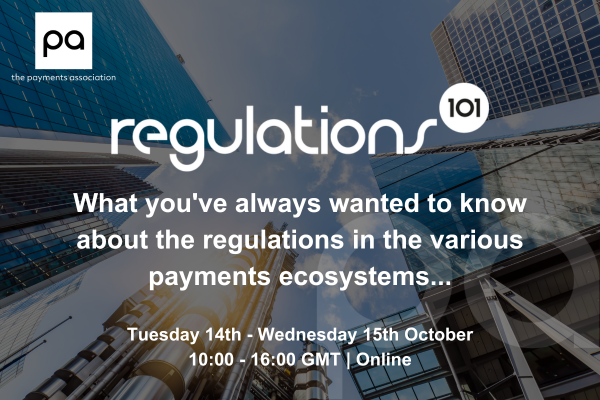Environmental, social and governance (ESG) values are here to stay, thanks to consumer and investor demand for greater transparency and social responsibility from businesses.
In response, companies across all verticals are increasingly looking to align their ambitions with ESG principles, and to pursue opportunities that offer long term societal benefits as well as business growth.
Whether intentionally or not, the payments sector in particular has emerged as a sustainability force for good by leveraging digital technologies that eliminate the need to print money, mint coins or carry plastic credit cards. Even receipts can now be sent via email – a Godsend for the environment when you consider that over 11 billion receipts are printed each year in the UK alone, requiring around 200,000 trees to be destroyed to make that paper.
Yet despite these achievements, a truly ESG compliant business needs to do more than roll out digital payment services. It needs to validate its claims with proof. How does the company measure its environmental impact? How does it prevent greenwashing and promote transparency? How does it promote social cohesion and emotional wellbeing among staff?
Undoubtedly, Implementing ESG-focused policies can be an opaque process owing to vague commitments and reporting, but fortunately, there are a few key strategies that payments companies can deploy to integrate ESG into their business model and protect against greenwashing allegations.
Why is ESG important?
ESG values, as stated by former UK Minister of Employment Guy Opperman, address the “financial risks from climate change, from under-investment or poor treatment of the workforce, from poor executive behaviour”. They’re rooted in long-term profit maximisation, with the movement outlining that an environmental, social and governance focus within an organisation will lead to greater future growth.
As a result, a growing number of investors are adapting their investment thesis to prioritise ESG-focused companies. According to a 2023 report conducted by Capital Group, 90% of global investors now utilise ESG within their investment analysis, with 33% of EMEA investors stating that ESG is central to their investment approach.
Omitting ESG from a payments company’s values will also restrict access to talent. Employees are favouring businesses with a focus on sustainable initiatives and clear governance structures, a report from KPMG earlier this year revealed, stating that 46% of workers want the company they work for to demonstrate a commitment to ESG.
Embedding ESG within product development
Payment companies can make an organisational shift by designing products that comply with ESG goals by nature. By embedding ESG values early in the product development process, costly repositioning is avoided down the line and greenwashing claims are avoided by nature.
It’s crucial that a few clear goals are set out ahead of product development; payments company’s plans need to be realistic, focusing on the key areas in which its product can make the greatest impact. The way forward is setting realistic targets and ensuring teams meet those targets, rather than aspirational goals which are rarely realised.
How payment companies can integrate ESG
Payments companies often provide cloud-based solutions to streamline payment processes and make financial services more efficient. Unfortunately, they aren’t able to readily switch to hydrogen-powered trucks or review physical supply chains, but there are a number of ways that they can become more efficient.
Starting with the ‘E’, payments companies can add to their growing suite of APIs and integrate environmental impact tracking. With expanded emissions data, customers are able to better mitigate their impact on the environment and reliably reach their sustainability goals. Payment companies can eliminate another step in the emissions mitigation process by partnering with carbon offset reward/loyalty providers to directly mitigate the harm to the environment of each transaction.
Social responsibility is perhaps the domain in which payments companies can have the largest impact. Since the start of the fintech revolution, payments companies have played a large role in the pursuit of financial inclusion, reducing barriers to creating money accounts, improving the remittance process, and a plethora of other initiatives. However, there’s still a long way to go – The World Bank states that 1.4 billion people remain unbanked, advising that the remaining underbanked are the hardest to reach.
When implementing ESG values, payments companies can instil a focus on reaching the underbanked, prioritising initiatives that extend financial services to new groups. Looking forward to 2024 and beyond, embedded finance stands out as an approach which can spearhead the payments industry’s efforts to increase financial inclusion, integrating payment services within the platforms that customers already interact with. Implementing social targets within payment companies is a key method of addressing the remaining 1.4 billion underbanked, and a great example of the real-world improvements achieved from the ESG revolution.
Finally, strengthening governance within an organisation may not have immediate external ramifications, but it is key to maintaining a long-term commitment to the environmental and social goals of a payments company. A key vehicle of governance is codifying unwritten decision-making practices, increasing transparency and repeatability throughout the organisation.
This approach ensures that the company is aligned on every decision and the reason it was taken, ensuring a coherent approach to realising ESG targets, and any other company priorities. Another method of implementing stronger governance practices is allocating rights and duties among stakeholders. This may mean assigning environmental oversight to a board member, oversight of social policies to the Chief of Staff, and a range of other functions to employees, directors and board members.
Strong governance is also an attractive feature for many potential investors or acquirers, demonstrating a clear decision-making process and strong adherence to environmental and social commitments.
The benefits of integrating ESG into payments companies
There are two notable stakeholders which benefit from payments companies integrating ESG values: the payment company and investors.
With a strong and demonstrable commitment to implementing ESG, payments companies and their clients benefit from an increased pool of potential customers and a more favourable brand image. Recent IPOs within the payments and wider fintech industries have included robust ESG reports to promote the company’s brand image, increasing interest from potential customers and investors alike.
Look no further than Stripe, an IPO candidate which has heavily adopted ESG to its benefit. Implementing ESG also boosts employee productivity, with PWC reporting that 75% of people want to work for an organisation that has a positive impact on society. Further, Environmental Finance revealed that 42% of employees want to have a greater focus on climate within their current job remit, demonstrating an appetite for a greater focus on the environment.
Focus on ESG implementation from investors is on the rise, contributing to greater scrutiny of portfolio companies and prospective investments. As regulators and reporting organisations place more top-down pressure on investors to ensure future compliance, ESG-focused companies are moving to the top of the pile. Also, ESG values are a method of increasing long-term profitability, a trait investors are always hungry for.
Managing the risks of “Greenwashing” allegations
An unfortunate reality of implementing ESG is the potential claims of greenwashing. However, there are steps payments companies can take to get ahead of those accusations.
Firstly, greenwashing claims are most successful when levied towards organisations without strong governance functions. Therefore, it’s key that payment companies set realistic targets concerning sustainability, and ensure that stakeholders have the resources necessary to work towards those goals. When a company is demonstrably delivering on clear ESG targets, greenwashing claims fall on deaf ears.
Second, companies integrating ESG can avoid or refute inaccurate greenwashing claims by publishing ESG-focused reports and being specific in sustainability claims. Consistent reports (or sections within annual/quarterly company reports) setting out sustainability targets and the work already done create a useful resource for refuting greenwashing claims. Specificity also goes a long way; if possible, publishing statistics alongside sustainability claims enables observers to verify the impact of the payment company’s ESG integration and rebuttal greenwashing claims.
ESG is not a silver bullet for increasing profitability and valuations but delivers a tangible benefit to all stakeholders. Coupled with a transparent approach to ESG reporting, payments companies can better incentivise employees and attract investors whilst avoiding greenwashing allegations.
Drisha Kirkman is head of programme management and sustainability at Paymentology.




























